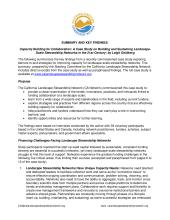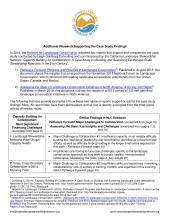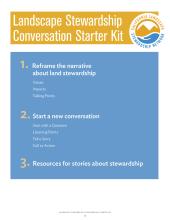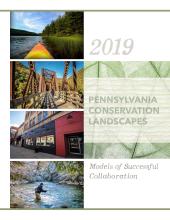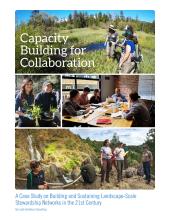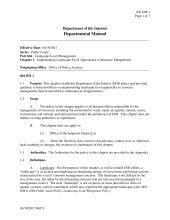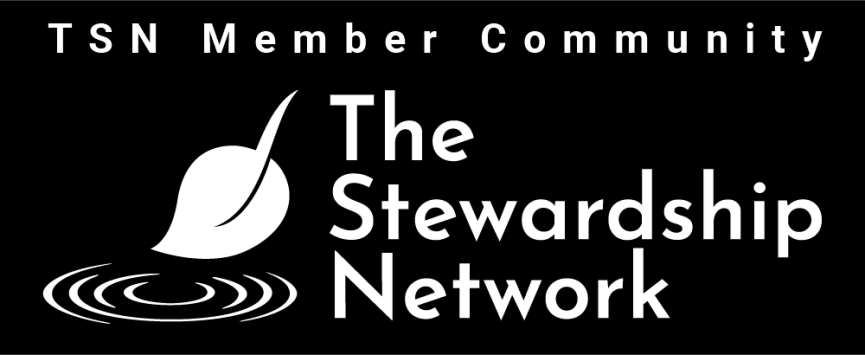Collaborative stewardship is both an art and a science. Get the tools you need to work better together here.
Tahoe-Central Sierra Initiative, January 2020
TCSI partners restore forest and watershed resilience across 2.4M acres through innovative planning, investment, and collaboration.
- Details
-
The Tahoe-Central Sierra Initiative (TCSI) is a partnership among the
USDA Forest Service, California Tahoe Conservancy, Sierra Nevada
Conservancy, The Nature Conservancy, National Forest Foundation,
California Forestry Association, and University of California Sagehen
Creek Field Station, and eight forest collaboratives. TCSI partners are
accelerating the restoration of forest and watershed resilience
through innovative planning, investment, and management across
the 2.4-million-acre landscape.This document was adapted from a product developed in 2020 for
the Sierra Nevada Conservancy for the TCSI and funded by the
California Climate Investments
California Landscape Stewardship Network, January 2019
Highlights lessons from Mount Tam case study to strengthen collaborative capacity for landscape-scale stewardship.
- Details
-
This document summarizes the key findings from a recently commissioned case study exploring barriers to and strategies for improving capacity for landscape-scale stewardship networks. This summary, prepared by the Steering Committee for the California Landscape Stewardship Network, includes direct excerpts from the case study as well as paraphrased findings.
California Landscape Stewardship Network, 2019
Supports Mount Tam case study with national research, reinforcing the value of collaborative capacity building.
- Details
-
This document provides examples of how two national reports support or add to the findings of the California Landscape Stewardship Network's Capacity Building for Collaboration case study.
California Landscape Stewardship Network, 2019
Empowers advocates to reframe stewardship as essential and fundable, offering tools to shift narratives and inspire investment in land care and community values.
- Details
-
How many times have you heard someone say "we can't fundraise for stewardship?" If that's how we think about stewardship, that's how it will be. As Henry Ford said, “Whether you think you can, or you think you can't - you're right.”
The goal of this Kit is to enable anyone who wants to prioritize, value, and fund the work of taking care of the land to change the narrative about stewardship. To move away from "it can't be funded" to "it is essential that we fund and prioritize it" while staying grounded in our values, impacts, and stories.
Pennsylvania Department of Conservation and Natural Resources, 2019
Highlights successful regional partnerships that integrate conservation, community, and economic development.
- Details
-
"Pennsylvania’s Conservation Landscapes are an innovative framing of the conservation and stewardship of natural resources that contribute to the long-term sustainability of special regions throughout the commonwealth. Through place-based partnerships these landscape-scale initiatives are being widely recognized as models for successful collaboration in Pennsylvania and the nation."
California Landscape Stewardship Network, November 2018
To protect CA's lands from fire/climate change, stewardship networks must secure stable funding, establish dedicated leadership, and strengthen cross-boundary collaboration.
US Department of Interior, January 2017
Provides DOI guidance for managing natural resources at landscape scale to improve ecological outcomes.
- Details
-
This chapter from the Department of Interior (DOI) Manual establishes policy and provides guidance to bureaus/offices on implementing landscape-level approaches to resource management. It highlights the need to meaningfully coordinate with diverse stakeholders, consider actions and implications at multiple scales, take integrative and interdisciplinary approaches to landscape management, and improving resilience by working at landscape scales.
USDA Forest Service, May 2012
Uses cognitive mapping and interviews to define urban stewardship, guiding future research and practice.
- Details
-
The U.S. Forest Service in the Pacific Northwest region has placed increasing focus on the stewardship of natural resources in urban settings. Stewardship has been described and defined in diverse ways within a variety of contexts, including the philosophical literature of environmentalism, agency program descriptions, and outreach by sponsoring organizations. Constructing a framework to convey the layered meanings of stewardship will help to focus and guide future research.
A cognitive mapping technique was used to elicit responses to the question “What is environmental stewardship?” Semi structured interviews were conducted with representatives of nine Seattle environmental organizations, a group of practitioners who collectively represent over 100 years of experience in the field.



